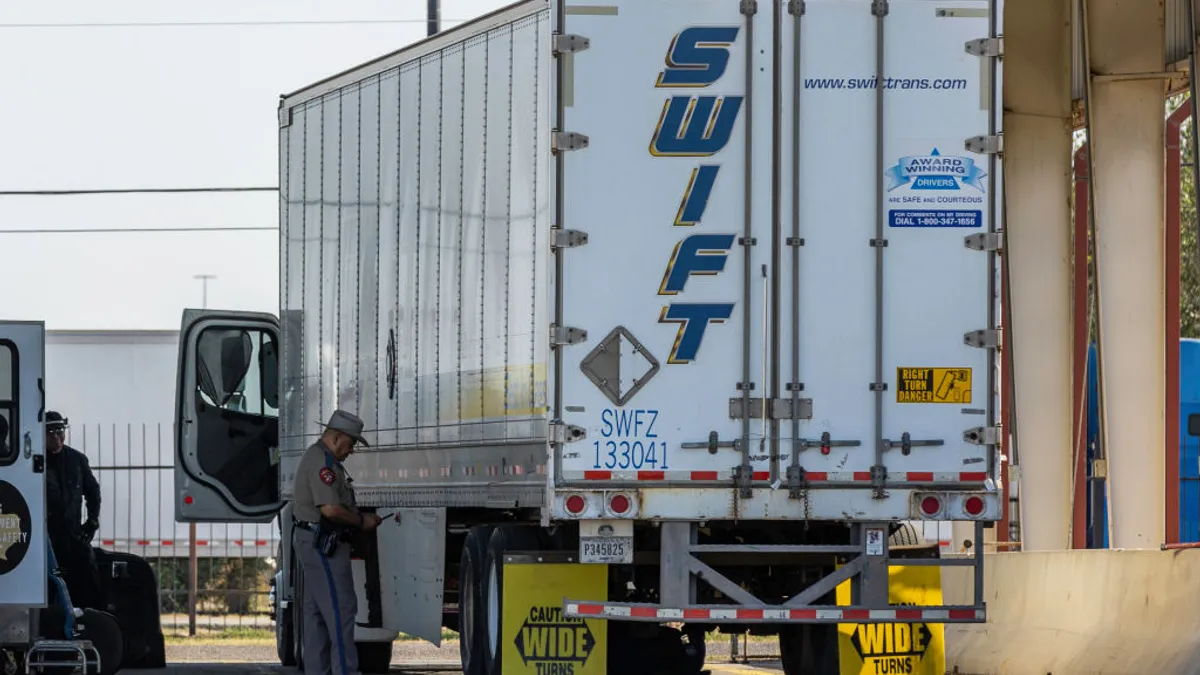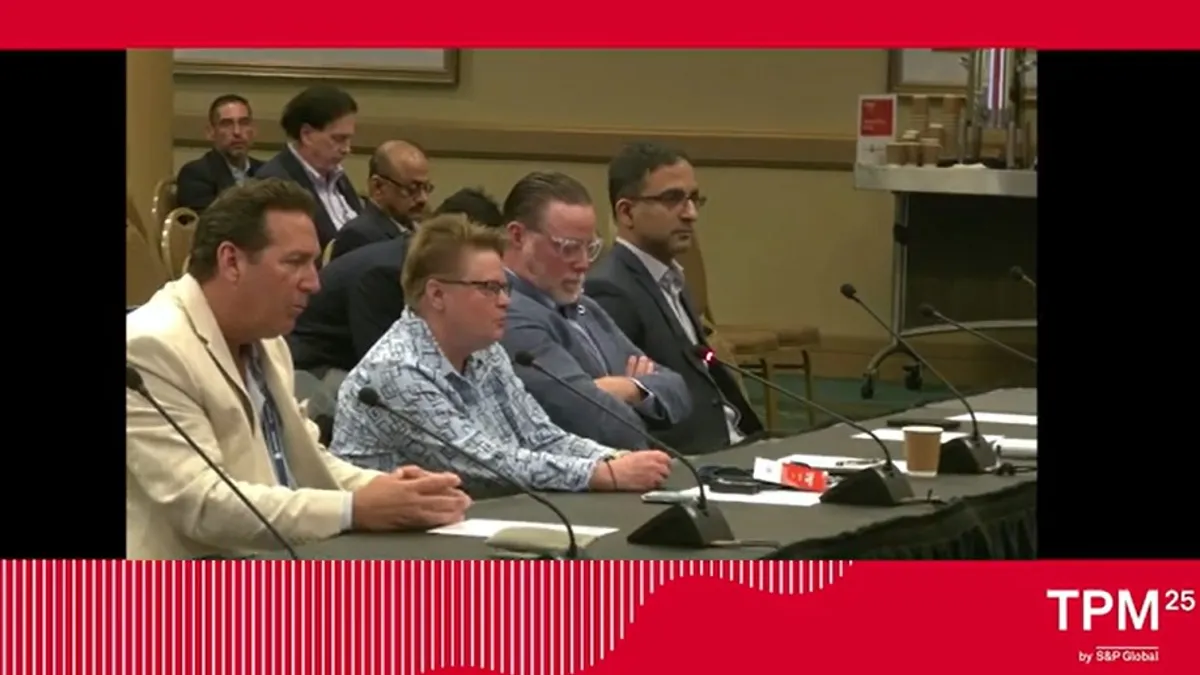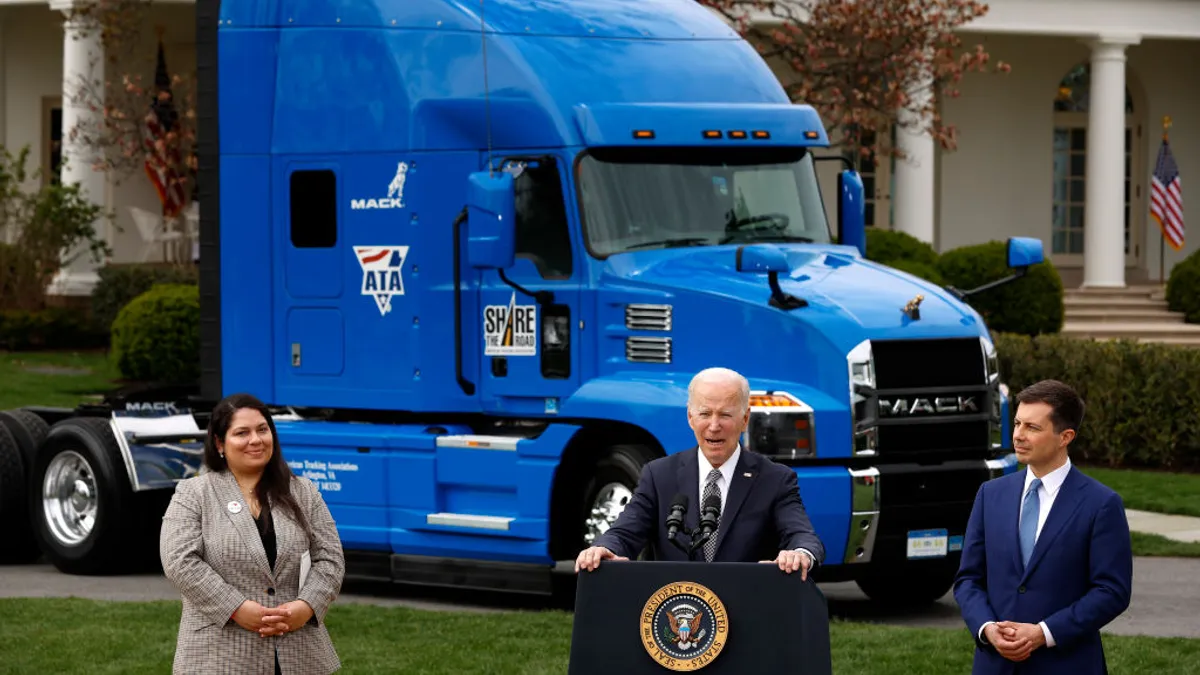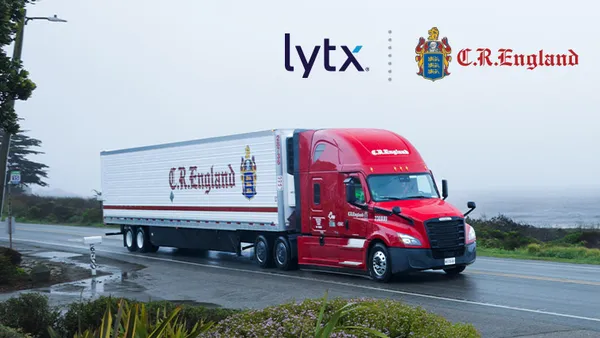SAN DIEGO — The truck driver shortage eased slightly in 2022, after more than 90% of TL carriers raised pay last year, but the industry still faces its second-largest number of vacancies on record, American Trucking Associations Chief Economist Bob Costello said Tuesday.
The number of unfilled driver jobs slid to nearly 78,000, down about 4% from a record 81,258 in 2021, according to the association’s projections.
The improvement is expected to be temporary, given that an aging workforce and freight demand are both projected to grow. The shortage projection, released on the final day of the ATA Management Conference & Exhibition at the San Diego Convention Center, is expected to grow over the next decade, Costello said.
The industry must recruit nearly 1.2 million drivers over the next 10 years to replace drivers leaving voluntarily or involuntarily and avoid the driver shortage ballooning to more than 160,000 in 2031, the ATA still projects.
“If things do not change,” Costello said, “I think that’s where we end up.”
The shortage has no single cause — and therefore no one solution, according to the ATA.
The high average age of drivers, leading to significant numbers of retirements; the industry’s failure to recruit more women, who make up just 8% of drivers, compared to 47% of the overall workforce; lifestyle disadvantages of long-haul trucking; inability to pass drug tests; and inadequate truck parking are among the primary contributors of the shortage, the ATA said.
Raising driver pay has somewhat helped in adding drivers. Truckload fleets doled out an average raise of 10.9%, according to the 2022 ATA Driver’s Compensation Study, released in August.
The average truckload driver made more than $69,000 last year, including salaries and bonuses and excluding benefits, an 18% increase in annual compensation from 2019, according to the ATA.
But higher pay doesn’t always translate to more drivers, the ATA said.
Some drivers view pay raises as a chance to work fewer hours, make the same amount of money and spend more time at home, the association said. Four in 10 truckload carriers reported to the ATA that drivers drove less when paid more.
Despite the shrinking number of overall driver vacancies, carriers again ranked the driver shortage and driver retention as their top concerns in trucking, according to the American Transportation Research Institute’s 2022 Critical Issues in the Trucking Industry report.
If the shortage feels to some carriers like it hasn’t lessened — or has even worsened — in the past year, a quality-vs.-quantity issue could be to blame, the ATA said in its report. The analysis does not take into consideration driving history, experience or other factors that play into carriers’ often-strict hiring criteria, it noted.
“As a result, despite receiving applications for employment, motor carriers are finding few eligible candidates,” the ATA said in its release.
Some carriers are noticing improvements following investments in their workforce. The driver shortage falling to No. 2 after five years as the industry’s top overall concern didn’t surprise Bill Usher Jr., president of Usher Transport, a Louisville, Kentucky-based tanker company.
“The driver shortage has eased somewhat if you can pay enough money,” Usher said at the conference Saturday.
But even some of the largest U.S. carriers readily acknowledge the uphill climb ahead. A federal apprenticeship pilot program lowering the age requirement for some interstate drivers to 18 from 21 is an exciting prospect, Werner Enterprises Chairman, President and CEO Derek Leathers said during an MCE luncheon panel Monday afternoon.

“Although we are excited about the opportunity to bring 18- to 21-year-olds in, we know that win alone will not solve this problem,” Leathers said. “It's a step in the right direction and one of many steps we're going to have to take, and keep working towards a larger goal.”
Carriers in other countries are struggling with similar challenges recruiting and retaining drivers.
Canada, whose trucking industry is a fraction of the size of the U.S.’s, allows 18-year-olds to haul freight. But the country is still confronting a shortage of 20,000 drivers that is projected to grow to 55,000 by 2024, Bison Transport President and CEO Rob Penner said during the Monday panel.
Mexico’s truck fleets face a similar challenge, panelist and CANACAR Presidente Nacional Ramón Medrano Ibarra said. The country was short 54,000 drivers as of last year, Ibarra said, citing an estimate earlier this year by IRU, a world road transport organization based in Geneva, Switzerland.
“We have a tremendous problem with drivers right now,” Ibarra said.





















